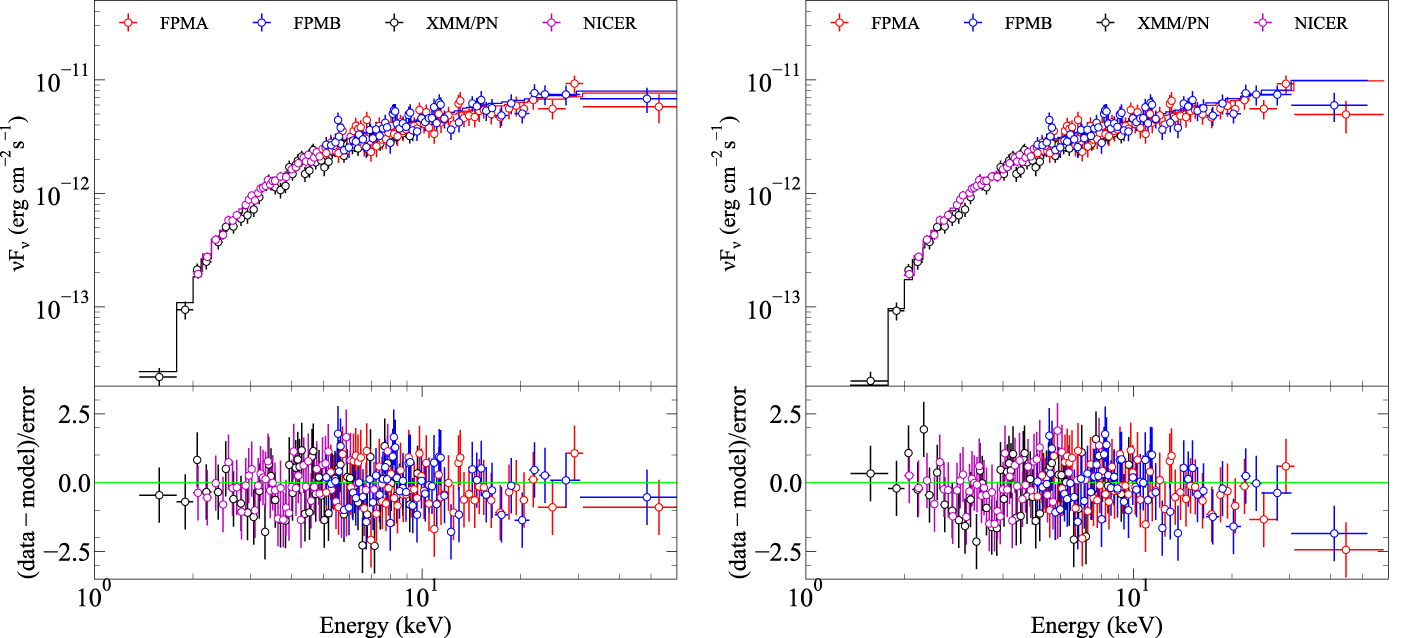NICER / ISS Science Nugget
for March 14, 2024
A "strobe light" to explore a pulsar's surroundings
Young, rapidly-rotating neutron stars are sometimes found embedded in the debris of the supernova explosion in which they were born. These supernova remnants generally appear in one of two forms: an expanding shell, or a centrally-brightened nebula. The latter, with the prototype being the famous Crab Nebula (formed in an explosion in the year 1054 AD), are evidently powered by the spin of the central neutron star and the resulting powerful radiation emanating from it, driving magnetic fields and injecting energetic particles into the star's immediate surroundings.
The pulsar J1849-0001, which rotates once around every 38 milliseconds, is approximately 43,000 years old and is found in one of these "pulsar wind nebulae" (PWN), which is seen across the electromagnetic spectrum even up to the highest-energy gamma-rays that we are capable of detecting with imaging astronomical instrumentation. Understanding how such high-energy radiation is produced, tracing back the emission mechanism to the central pulsar, is a key missing piece of the puzzle both for the nature of radiation from the extreme physical environment of pulsar magnetospheres and the material content and long-term evolution of PWN. Connecting these dots is the subject of a recently published peer-reviewed paper in The Astrophysical Journal by C. Kim (Chungbuk Natl. Univ., Rep. of Korea) and collaborators. The team used 3.5 years of NICER observations of PSR J1849 to derive a model of its spin behavior; the model was then applied to data from several other telescopes. By defining on-pulse and off-pulse intervals in time, image and spectral analyses were carried out separately for the pulsed emission (on) and the nebula (off), extending to higher-energy X-rays and beyond. The results, incorporating data from ground-based gamma-ray facilities, show that the magnetic field within the PWN is weaker than expected, but that electrons injected by the pulsar are accelerated to extremely high energies (hundreds of tera-electronvolts, TeV) and that they propagate out to about 100 lightyears in the PWN in approximately 10,000 years.
Continued NICER timing of PSR J1849 supports this and other science objectives, such as the ongoing search for gravitational waves from nearby, high spin-rate neutron stars.


Left: Pulsation timing of PSR J1849-0001. The upper panel shows the pulse profile as measured with NICER and two other telescopes, NASA's NuSTAR (higher-energy X-rays) and ESA's Newton X-ray Multi-Mirror (XMM). Rotational phase across the pulsar's 38 millisecond spin period is on the horizontal axis, with the same data plotted twice (and without error bars in the second cycle) for clarity. The off-pulse segment used for multiwavelength analysis is indicated. The lower panel captures the long-term timing behavior of J1849's pulsations, based primarily on NICER monitoring observations. The observed-minus-computed pulse arrival time "residuals" after fitting out long-term trends are consistent with zero in this plot, where the resulting NICER model is used to derive the pulsation properties from data acquired by the other telescopes. (Figure credit: Kim et al. 2024) Right: Two spectral fits to the on-pulse emission, including data from NICER, NuSTAR's FPMA and FPMB instruments, and XMM's PN instrument. Photon energy is on the horizontal axis, brightness is on the vertical axis. The left-hand panel assumes a log-parabolic (logpar) power-law model, while the right-hand panel assumes a simple power-law model; the flat residuals in the lower panel suggest that the logpar model is clearly a better match to the data, especially at the lowest and highest energies. (Figure credit: Kim et al. 2024)
<< Previous
Main Index